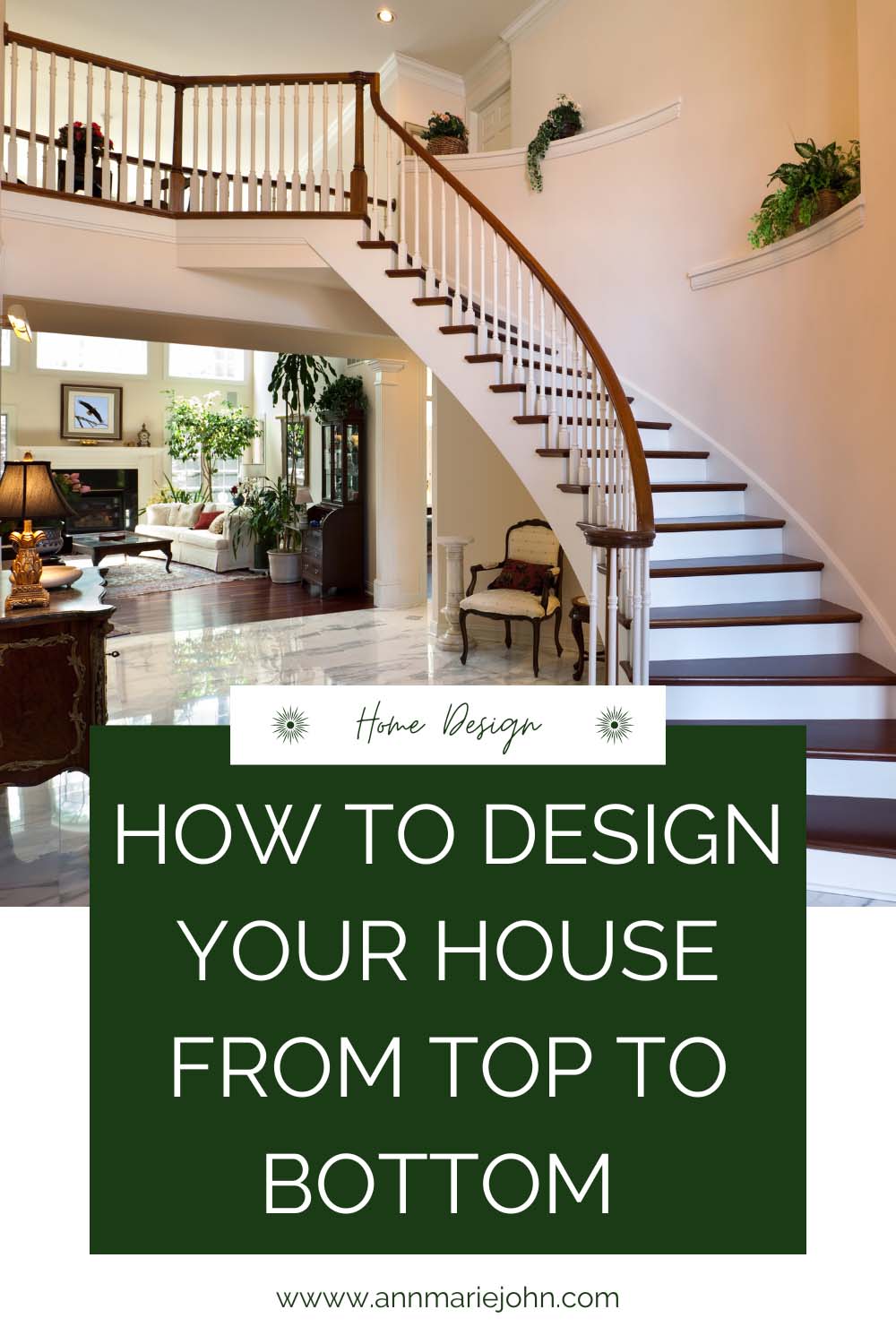Take control of your home design process with these easy steps! Learn how to plan and create the perfect home for you and your family.

Designing your own home from top to bottom can be a hard task, but it’s also incredibly rewarding. Not only does it allow you to create a space that perfectly fits your needs and style, but it also allows you to put your own touch on the place where you’ll be spending most of your time. Here are three important steps to take when designing your dream home.

Step 1: Determine Your Needs and Wants
Before you can start designing your home, you need to know what you want out of it. Start by making a list of your must-haves. This could include things like the number of bedrooms and bathrooms, a home office, or a large kitchen. Once you have your must-haves listed, start thinking about your wants. This could be anything from a large walk-in closet to a home gym or a fireplace in the living room.
It’s also important to consider your lifestyle and how your home can support it. For example, if you love to entertain, you may want a large, open living room and kitchen area that’s perfect for hosting dinner parties. If you have young children or pets, you may want to consider features like a fenced-in backyard or a playroom.
Step 2: Work with an Architect or Designer
Unless you have experience in architecture or design, it’s best to work with a professional. An architect or designer can help you turn your ideas into a workable plan and ensure that your home is structurally sound and meets local building codes, or you can check out Amber Book for Architecture exam preparation which may help you in this process with high-quality animated videos and study materials.
If you decide to choose a professional in this field, know that they can also help you make important decisions about things like the layout, finishes, and materials. Just be sure to look at their portfolio before choosing an architect or designer to make sure their style matches yours. It’s also important that you feel comfortable working with them and that they understand your needs and vision for your home.
Step 3: Pay Attention to the Details
When designing your own home, it’s the little details that can make a big difference. This includes everything from the lighting fixtures to the door handles. When choosing finishes and materials, consider how they’ll work together to create a cohesive look and feel.
It’s also important to think about how you’ll use each room and what kind of furniture and decor will work best. For example, if you’re designing a bedroom, consider where the bed will go and what kind of lighting will work best for reading in bed. If you’re designing a home office, think about how you can create a space that’s both functional and inspiring.
Step 4: Consider Sustainability and Energy Efficiency
In today’s world, sustainability and energy efficiency are increasingly important considerations in home design. When designing your home, consider features like solar panels, high-efficiency HVAC systems, and Energy Star-rated appliances. These features not only help reduce your carbon footprint but can also save you money on energy bills in the long run.
Other sustainable features to consider include using low-VOC paints and materials, installing a rainwater harvesting system, and incorporating natural lighting and ventilation into your design. By making sustainability a priority in your design, you can create a home that’s not only beautiful and functional but also eco-friendly.
Step 5: Plan for Storage and Organization
One of the most important aspects of a well-designed home is adequate storage and organization. When planning your design, think about how you’ll store and organize everything from clothing and linens to books and kitchen utensils. Consider built-in storage solutions like shelves, cabinets, and closets that can be customized to fit your needs.
In addition to built-in storage, consider adding organizational features like a mudroom or a laundry room with plenty of storage space. These features not only help keep your home tidy and clutter-free but can also add value to your home if you ever decide to sell.
Step 6: Budget and Timeline Management
Designing your own home can be a major investment, so it’s essential to set a budget and stick to it. Work with your architect or designer to create a detailed budget that includes all costs, from design and construction to furnishings and finishes. Be sure to factor in contingencies for unexpected expenses.
In addition to budget management, it’s also important to have a timeline for your project. Work with your architect or designer to create a realistic timeline that takes into account things like the permitting process, construction timelines, and any custom or specialty items that may require additional lead time. Having a clear timeline can help you stay on track and ensure that your project is completed on time and within budget.
In Conclusion
Designing your own home requires careful planning and attention to detail. By considering sustainability and energy efficiency, planning for storage and organization, and managing your budget and timeline effectively, you can create a home that’s not only beautiful and functional but also sustainable and cost-effective. Remember, this is your dream home, so take the time to design it right and create a space that you and your family will love for years to come.
